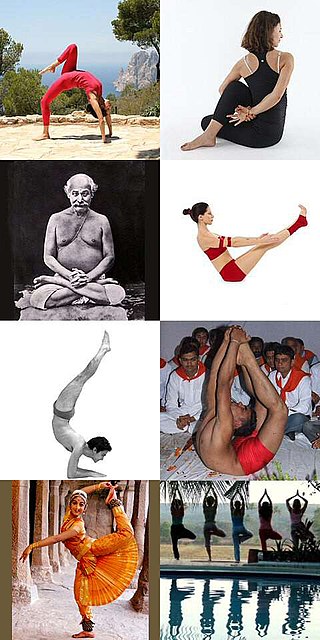
An āsana is a body posture, originally and still a general term for a sitting meditation pose, and later extended in hatha yoga and modern yoga as exercise, to any type of position, adding reclining, standing, inverted, twisting, and balancing poses. The Yoga Sutras of Patanjali define "asana" as "[a position that] is steady and comfortable". Patanjali mentions the ability to sit for extended periods as one of the eight limbs of his system. Asanas are also called yoga poses or yoga postures in English.

Sun Salutation, also called Surya Namaskar(a) or Salute to the Sun (Sanskrit: सूर्यनमस्कार, romanized: Sūryanamaskāra), is a practice in yoga as exercise incorporating a flow sequence of some twelve linked asanas. The asana sequence was first recorded as yoga in the early 20th century, though similar exercises were in use in India before that, for example among wrestlers. The basic sequence involves moving from a standing position into Downward and Upward Dog poses and then back to the standing position, but many variations are possible. The set of 12 asanas is dedicated to the Hindu solar deity, Surya. In some Indian traditions, the positions are each associated with a different mantra.

Eugen Sandow was a German bodybuilder and showman from Prussia. Born in Königsberg, Sandow became interested in bodybuilding at the age of ten during a visit to Italy.
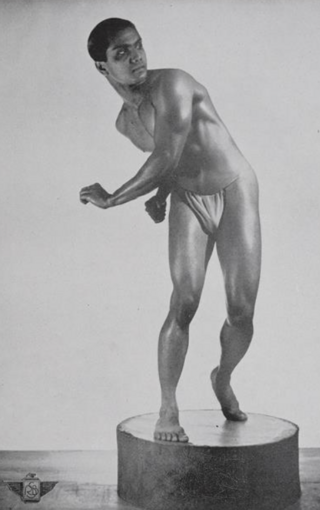
Ramesh S. Balsekar was an Indian Advaita teacher and physical culturist. He was disciple and principle translator of Nisargadatta Maharaj, a renowned Advaita master. From early childhood, Balsekar was drawn to Advaita, a nondual teaching, particularly the teachings of Ramana Maharshi and Wei Wu Wei. He wrote more than 20 books, was president of the Bank of India, and received guests daily in his home in Mumbai until shortly before his death in 2009.

Downward Dog Pose or Downward-facing Dog Pose, also called Adho Mukha Svanasana, is an inversion asana, often practised as part of a flowing sequence of poses, especially Surya Namaskar, the Salute to the Sun. The asana is commonly used in modern yoga as exercise. The asana does not have formally named variations, but several playful variants are used to assist beginning practitioners to become comfortable in the pose.
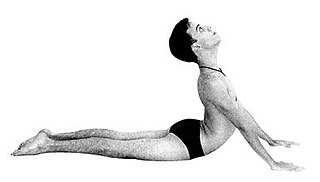
Bhujangasana or Cobra Pose is a reclining back-bending asana in hatha yoga and modern yoga as exercise. It is commonly performed in a cycle of asanas in Surya Namaskar, Salute to the Sun, as an alternative to Urdhva Mukha Svanasana, Upward Dog Pose. The Yin Yoga form is Sphinx Pose.

The Complete Illustrated Book of Yoga is a bestselling 1960 book by Swami Vishnudevananda, the founder of the Sivananda Yoga Vedanta Centres. It is an introduction to Hatha yoga, describing the Yoga Sutras of Patanjali and the Hatha Yoga Pradipika. It contributed to the incorporation of Surya Namaskar into yoga as exercise. While some of its subject matter is the traditional philosophy of yoga, its detailed photographs of Vishnudevananda performing the asanas is modern, helping to market the Sivananda yoga brand to a global audience.

Bhawanrao Shriniwasrao Pant Pratinidhi,, popularly known as Balasaheb Pant Pratinidhi or Bhawanrao Balasaheb Pant Pratinidhi, was the ruler of the princely state of Aundh of British Raj during the reign.

Ashtanga Namaskara, Ashtanga Dandavat Pranam, Eight Limbed pose, Caterpillar pose, or Chest, Knees and Chin pose is an asana sometimes used in the Surya Namaskar sequence in modern yoga as exercise, where the body is balanced on eight points of contact with the floor: feet, knees, chest, chin and hands.
Modern yoga is a wide range of yoga practices with differing purposes, encompassing in its various forms yoga philosophy derived from the Vedas, physical postures derived from Hatha yoga, devotional and tantra-based practices, and Hindu nation-building approaches.

Yoga as exercise is a physical activity consisting mainly of postures, often connected by flowing sequences, sometimes accompanied by breathing exercises, and frequently ending with relaxation lying down or meditation. Yoga in this form has become familiar across the world, especially in the US and Europe. It is derived from medieval Haṭha yoga, which made use of similar postures, but it is generally simply called "yoga". Academics have given yoga as exercise a variety of names, including modern postural yoga and transnational anglophone yoga.
Mark Singleton is a scholar and practitioner of yoga. He studied yoga intensively in India, and became a qualified yoga teacher, until returning to England to study divinity and research the origins of modern postural yoga. His doctoral dissertation, which argued that posture-based forms of yoga represent a radical break from haṭha yoga tradition, with different goals, and an unprecedented emphasis on āsanas, was later published in book form as the widely-read Yoga Body.
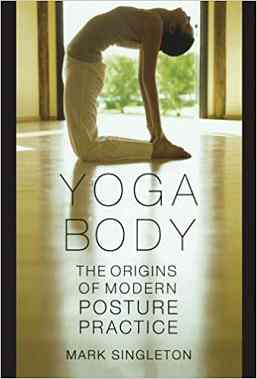
Yoga Body: The Origins of Modern Posture Practice is a 2010 book on yoga as exercise by the yoga scholar Mark Singleton. It is based on his PhD thesis, and argues that the yoga known worldwide is, in large part, a radical break from hatha yoga tradition, with different goals, and an unprecedented emphasis on asanas, many of them acquired in the 20th century. By the 19th century, the book explains, asanas and their ascetic practitioners were despised, and the yoga that Vivekananda brought to the West in the 1890s was asana-free. Yet, from the 1920s, an asana-based yoga emerged, with an emphasis on its health benefits, and flowing sequences (vinyasas) adapted from the gymnastics of the physical culture movement. This was encouraged by Indian nationalism, with the desire to present an image of health and strength.
Joseph S. Alter is an American medical anthropologist known for his research into the modern practice of yoga as exercise, his 2004 book Yoga in Modern India, and the physical and medical culture of South Asia.

Yoga Makaranda, meaning "Essence of Yoga", is a 1934 book on hatha yoga by the influential pioneer of yoga as exercise, Tirumalai Krishnamacharya. Most of the text is a description of 42 asanas accompanied by 95 photographs of Krishnamacharya and his students executing the poses. There is a brief account of practices other than asanas, which form just one of the eight limbs of classical yoga, that Krishnamacharya "did not instruct his students to practice".

The Path of Modern Yoga: The History of an Embodied Spiritual Practice is a 2016 history of the modern practice of postural yoga by the yoga scholar Elliott Goldberg. It focuses in detail on eleven pioneering figures of the transformation of yoga in the 20th century, including Yogendra, Kuvalayananda, Pant Pratinidhi, Krishnamacharya, B. K. S. Iyengar and Indra Devi.

Modern yoga as exercise has often been taught by women to classes consisting mainly of women. This continued a tradition of gendered physical activity dating back to the early 20th century, with the Harmonic Gymnastics of Genevieve Stebbins in the US and Mary Bagot Stack in Britain. One of the pioneers of modern yoga, Indra Devi, a pupil of Krishnamacharya, popularised yoga among American women using her celebrity Hollywood clients as a lever.

Seetharaman Sundaram was a lawyer and pioneer of yoga as exercise, often known as Yogacharya Sundaram, and the first person to publish a handbook of yoga asanas in English, his 1928 Yogic Physical Culture. This was also the first yoga book to be illustrated with photographs. He travelled India with the bodybuilder K. V. Iyer, helping to popularise the new blend of hatha yoga and physical culture.
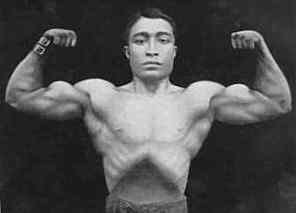
Bishnu Charan Ghosh was an Indian bodybuilder and Hathayogi. He was the younger brother of yogi Paramahansa Yogananda, who wrote the 1946 book Autobiography of a Yogi. In 1923, he founded the College of Physical Education, Calcutta. His writings influenced the development of modern yoga as exercise in India and Bikram Choudhury founded Bikram Yoga based on his teachings.

The standing asanas are the yoga poses or asanas with one or both feet on the ground, and the body more or less upright. They are among the most distinctive features of modern yoga as exercise. Until the 20th century there were very few of these, the best example being Vrikshasana, Tree Pose. From the time of Krishnamacharya in Mysore, many standing poses have been created. Two major sources of these asanas have been identified: the exercise sequence Surya Namaskar ; and the gymnastics widely practised in India at the time, based on the prevailing physical culture.


















